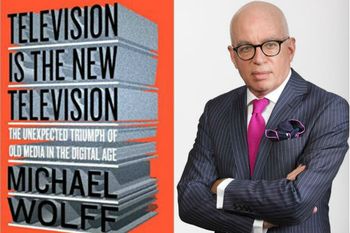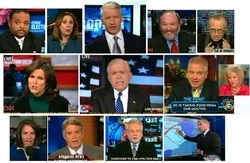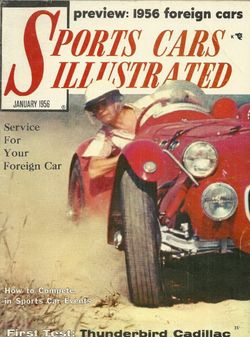
Both, in the current economic environment, are fundamentally wrong.
You will find the answer when you turn on your TV. What you will find there is not action, and not news. You will find talking heads. Talking heads are cheap and draw audiences. This was true 50 years ago, when talk radio was first invented, and it is just as true today. TV is not the new TV, it’s the new radio.
A web site budget consists of three kinds of costs:
- Capital costs, the Web site and tools needed to create content on it
- Bandwidth costs, which have been falling over time
- Labor costs, which have been rising over time. These include the management costs needed to define and oversee the site’s mission.
A typewriter and word processing software are one kind of capital cost, but it takes a lot of labor to create things with them. A TV camera and studio set up are another kind of capital cost, but they take much less labor to create things with them.
Anyone with “the gift of the gab,” as Salman Rushdie wrote, can create an hour of TV or radio content in about an hour. But even the best writer (especially the best writer) may take many days to create an hour’s worth of reading material.

I can get a full day’s supply of news and information in 10 minutes with Google News. It takes reporters and writers many, many hard hours to write what I can read in 10 minutes. Yet that is all the time I’m willing to give it. During those 10 minutes I’m actively engaged with the content, my whole attention is focused on it. With video or audio content, the engagement is lower but I spend a lot more time with it.
It’s time, not attention, that determines Internet ad rates. A 30-second video clip gets a 30-second ad, sold at a CP/M rate that may be very, very cheap but still results in a much greater gain for the producer of that clip than the writer gets for doing any kind of in-depth work.

In the Internet age, this slicing-and-dicing is done by advertising buyers. They can buy a local market, a specific interest, or an industry for the same low rate they get for advertising to everyone. There is a lot of waste in this process of intrinsic targeting – you wind up throwing up ads that make no sense given the content next to them – but it’s super-cheap, and thus efficient for the advertiser.
This means that publishers can’t get that high rate for the defined audience. It means that readers are constantly being bombarded with ads that serve no purpose, especially video ads. Combine this with the increasingly fine economics to be found in creating “talking head” video content and you have the problem journalists (and their audience) face today.
It’s not that “TV is the new TV.” TV has moved to the Internet and become radio. It’s not that there isn’t a future in digital, it’s that this is an audio-and-visual future.
What I have been saying for 20 years now, but not proving (because I’d rather be writing a story) is that journalism is about making markets, about putting buyers and sellers together. This medium can do a lot more than carry advertising. It can enable direct purchasing. When your content is used by a buyer to buy something from a seller, you’re earning a lot more of that purchase price than you could possibly earn from an advertiser. You’re fulfilling the aim of all advertising, which is not to be a billboard on the road, but to be the place on that road where you stop for a meal or the night. You’re earning a commission, not an impression.

Thus, the opportunity remains. Those businesses that do know how to sell digitally are grabbing more-and-more of our commerce, and since this is a very small minority of businesses, with a significant advantage to those who can do it at scale, we have today’s winner-take-all market. It’s as if the whole world were a small town, and Amazon.Com the Wal-Mart by the highway sucking the life out of it.
There are things that merchants can do to survive, which don’t cost a lot of money. They can build mailing lists. They can send regular notes to the people on those lists. Most important, they can solicit questions on those e-mails, and respond immediately to online queries.
There are also things that a local publisher, or anyone serving a defined audience, can do. They can make their site a “city directory” of what their audience may want. They can facilitate the path of buyers down the sales funnel, directing questions to the appropriate people, and standing in on disputes. They can produce videos about their business partners, showing the stock, the services, the people behind the counter, and letting them speak for themselves. Click on the ad, get the pitch, get a form where you can ask questions about stock or appointments, order it online for pick up or delivery, make the reservation right here, right now.
This is called taking people down a sales funnel, using technology. Publishers serving a defined audience can still do these things, providing a deeper service to every visitor to their site, turning advertisers into business partners, earning commissions rather than just selling ads. And this will create the cash flow with which they can create ever-more content, a virtuous circle rather than the current vicious one.
It’s still possible. What is needed is a case study. Care to be the one? You have nothing to save but your industry, your livelihood, your future.










